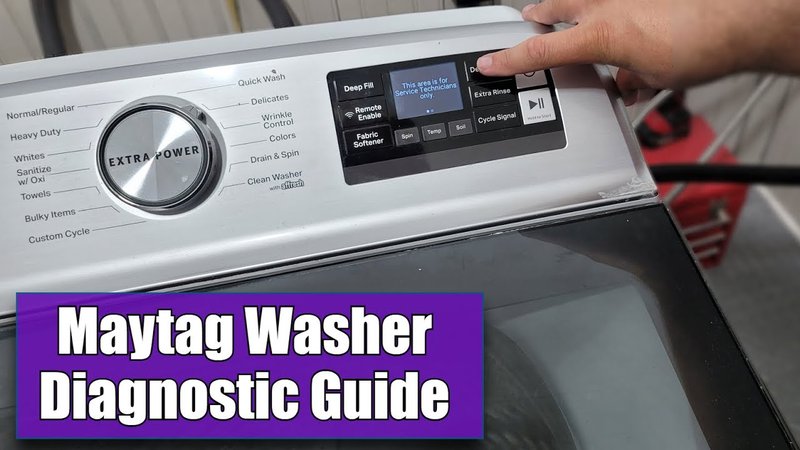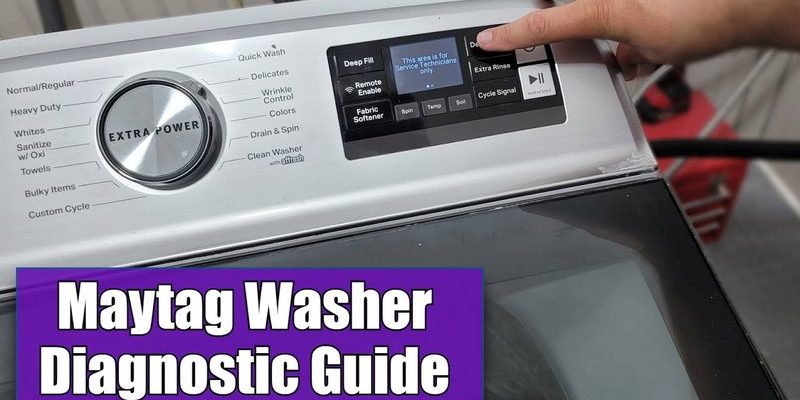
The mysterious OE error might seem like your washing machine is speaking in code, but it’s simply a way for the appliance to tell you that something’s amiss, typically related to drainage problems. Think of your washing machine as a choreographed dance; when something disrupts the flow, it sends out signals to let you know it needs a hand. So, should you roll up your sleeves or dial a technician? Let’s explore when it’s time to make that call.
Understanding the OE Error Code
When your Maytag washing machine displays an OE error code, it’s like a red flag signaling a drainage issue. Picture the washing machine as a sink that won’t empty – frustrating, right? The OE error is essentially saying, “Help! Water isn’t leaving as it should.” This might mean there’s a blockage or pump problem hindering the water from draining correctly.
Imagine driving a car with a tire slowly losing air. You might get away with topping it up a few times, but without addressing the underlying issue, you’re heading for a flat. In the same way, ignoring an OE error won’t fix the problem. It usually indicates a clogged drain hose, a malfunctioning pump, or even a kinked hose, all of which prevent water from draining effectively.
So how do you decide whether it’s a quick fix you can handle or if it’s time to call for backup? Start by checking for obvious blockages in the hose or pump. Sometimes a simple unclogging does the trick. But if you’ve tried and the error persists—much like a tire that keeps deflating despite refills—it could be time to consult a professional.
Common Causes of the OE Error Code
Let’s get to the root of the matter: why are these drainage issues happening? The OE code can be triggered by a few common culprits that you might not notice right away. One prevalent cause is a clogged drain hose. Imagine trying to drink through a straw that’s blocked with paper. The obstruction stops the water from flowing out, causing the machine to throw an error code to alert you of the problem.
Another frequent issue could be a malfunctioning drain pump. If it’s not spinning or working efficiently, water will hang around longer than it should. Think of it as a conveyor belt suddenly stopping in a factory—everything else comes to a halt. If the pump isn’t moving water out of the drum, the machine can’t proceed with the cycle. Additionally, check if the drain hose is kinked or bent. Picture bending a garden hose in half: suddenly, no water flows through.
Before you hit the panic button, see if these fixes clear the code. But remember, if you’ve looked into these factors and the problem still persists—much like a locked door that won’t budge with a push— it’s best to call a technician for help.
When to Call a Technician
Here’s the deal: sometimes your DIY efforts just won’t cut it. If you’ve ensured that hoses aren’t clogged or kinked and the drain pump seems to be struggling despite your best efforts, it’s time to get a pro involved. A technician has the tools and expertise to dive deeper and diagnose hardware issues that might not be visible to the naked eye.
You might be wondering, why not just keep trying to solve it yourself? While perseverance is great, continuing to run the machine with unresolved issues could worsen the problem. Picture a crack in a windshield that grows every time you hit a bump. What starts as a small issue can quickly escalate if not addressed properly.
So at this point, your best move is to let a professional assess. They can identify if there’s a need for part replacements or repair beyond simple troubleshooting. This not only saves you from potential headaches but also extends the lifespan of your machine.
Preventative Tips to Avoid Future Errors
While calling a technician is sometimes unavoidable, there are proactive measures you can take to minimize future issues. You wouldn’t leave your car unchecked for years, and the same mindset can be applied to your washing machine. Regular maintenance checks are essential—much like routine oil changes in a car—to keep things running smoothly.
Start by cleaning the washer filter regularly. A clogged filter is like a blocked artery; you want to keep it clear to maintain the flow. Also, ensure the drain hose is correctly installed and free of blockages. Occasionally inspect it for regular wear and tear, much like checking tires for tread.
And here’s a tip many overlook: don’t overload your machine. It puts extra strain on the mechanics and can lead to drainage issues more frequently. By treating your machine with care, you’re less likely to see those dreaded error codes pop up, keeping your laundry routine blissfully uninterrupted.
With these insights, you’re better equipped to handle the OE error code with a balanced perspective—knowing when a simple fix will do and when it’s wise to call in the pros. So next time your Maytag washing machine is sending you signals, you’ll know just what to do!
